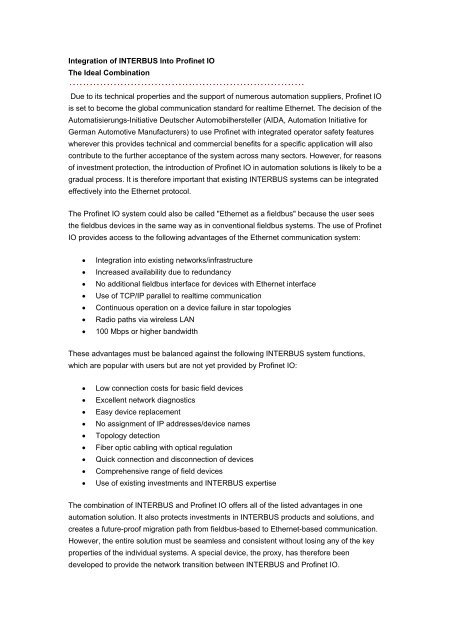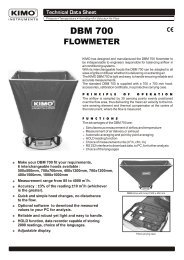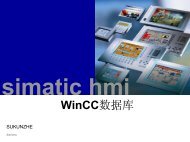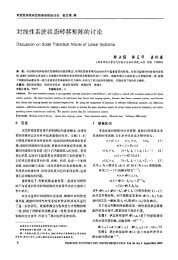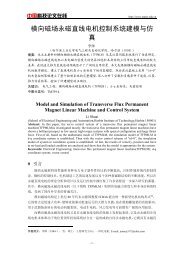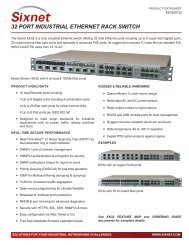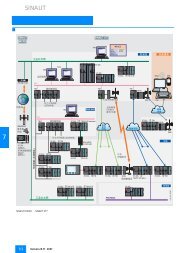Integration of INTERBUS Into Profinet IO
Integration of INTERBUS Into Profinet IO
Integration of INTERBUS Into Profinet IO
- No tags were found...
You also want an ePaper? Increase the reach of your titles
YUMPU automatically turns print PDFs into web optimized ePapers that Google loves.
Modular <strong>Integration</strong>Figure 3 provides an overview <strong>of</strong> modular integration. To simplify the view, the submodulelevel has been omitted because every module contains only one submodule.In a modular integration concept, slot 1 is reserved for the <strong>INTERBUS</strong>master, while the slaves are assigned to slots 2 and aboveSlot 1 <strong>of</strong> the Pr<strong>of</strong>inet <strong>IO</strong> device model is reserved for the <strong>INTERBUS</strong> master. The cyclicprocess data channel, which is used for status messages and control registers, can be usedto request the status <strong>of</strong> the <strong>INTERBUS</strong> system and to execute a special action such asconnecting and disconnecting devices. All events, which do not affect a specific slot, such asgeneral parameterization errors, are mapped to the channel diagnostics <strong>of</strong> slot 1. Everydiagnostic event is sent to the control system using a corresponding diagnostic alarm.All <strong>INTERBUS</strong> slaves connected to the master use slots 2 and above. The order <strong>of</strong> the slotsmust correspond to the structure <strong>of</strong> the <strong>INTERBUS</strong> system. Empty slots are not permitted.The cyclic process data <strong>of</strong> a slot is assigned directly to the input and output data <strong>of</strong> theindividual <strong>INTERBUS</strong> slaves, while the Pr<strong>of</strong>inet <strong>IO</strong> parameters are used for settingdevice-specific data (e.g., ID code or process data length) and for mapping device-specificPCP parameters.A key feature <strong>of</strong> the <strong>INTERBUS</strong> system is its excellent diagnostic properties. All diagnosticmessages are therefore available as Pr<strong>of</strong>inet <strong>IO</strong> channel diagnostics and sent to the controlsystem using diagnostic alarms. The control system then displays the diagnostic event inplain text.Configuration AspectsPr<strong>of</strong>inet <strong>IO</strong> devices are described in GSDML (Generic Station Description Markup Language),which is a further development <strong>of</strong> GSD (Generic Station Description) used in the Pr<strong>of</strong>ibussystem. The file must include the slots <strong>of</strong> an <strong>IO</strong> device as well as all the modules, which canbe integrated in the slots. Since the slaves <strong>of</strong> the <strong>INTERBUS</strong> system are mapped to themodules <strong>of</strong> the <strong>IO</strong> device during fieldbus integration, the GSDML file for the proxy should also
the relevant application. Key features <strong>of</strong> the concept include minimal runtime losses, the use<strong>of</strong> standard s<strong>of</strong>tware for configuration, and the direct configuration <strong>of</strong> the <strong>INTERBUS</strong> systemin the control system. In addition, the comprehensive diagnostic properties <strong>of</strong> the fieldbussystem can be integrated easily into the world <strong>of</strong> Pr<strong>of</strong>inet <strong>IO</strong>.Download Brochure "Pr<strong>of</strong>inet Basics"


